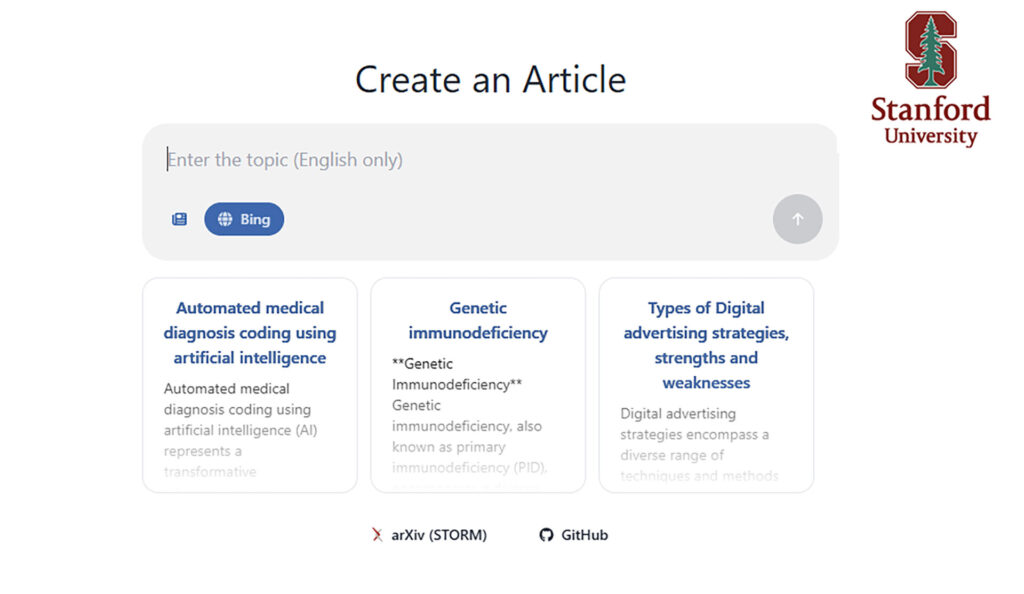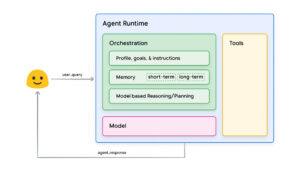Writing detailed, well-researched articles is often a daunting and time-intensive process, even for seasoned authors. What if artificial intelligence could assist in crafting summaries of complex topics? Enter STORM (Synthesis of Topic Outlines through Retrieval and Multi-perspective Question Asking), an innovative AI system developed by researchers at Stanford University. Designed to generate Wikipedia-style articles on virtually any subject, STORM leverages large language models and web search to automate the foundational stages of article creation.
Highlighted on the machine learning platform Papers with Code, STORM is an open-source system with its official repository available on GitHub. Its capabilities spark curiosity about whether it truly delivers on its promise: drafting well-structured, factual articles with proper citations in just minutes.
How STORM Works: A Two-Step Process for Article Creation
STORM automates the preparation phase of writing comprehensive articles. This phase typically requires extensive research, sourcing references, and drafting an outline before writing can even begin. The system breaks this process into two main steps:
- Research and Outline Generation
STORM independently explores the topic, gathers references, and synthesizes a detailed outline. It uses multi-perspective questioning to uncover different angles, drawing insights from similar Wikipedia articles to craft targeted queries.
- Simulated Conversations for Deeper Insights
STORM simulates a dialogue between a hypothetical Wikipedia author and an expert on the topic. The "expert" bases its answers on credible internet sources identified through the AI search engine You.com. This iterative questioning enables STORM to refine its understanding of the topic and generate follow-up queries for clarity.
The system then combines its findings, internal knowledge, and collected references to formulate a structured article, section by section. Its approach is reminiscent of Perplexity Pages, another AI system focused on generating comprehensive overviews.
Evaluating STORM: Strengths and Challenges
To assess its performance, the researchers developed FreshWiki, a dataset of up-to-date, high-quality Wikipedia articles. Using FreshWiki, they compared STORM-generated articles with those written by humans, focusing on structure, coverage, and accuracy. Key findings include:
- Improved Structure and Coverage
Expert evaluations revealed that STORM-generated articles had significantly better structure (25% improvement) and broader coverage (10% improvement) compared to articles generated by traditional search-based methods.
- Challenges with Bias and Context
Despite its strengths, STORM occasionally inherits biases from internet sources or draws misleading connections between unrelated facts. For instance, when drafting an article on "current political trends in East Germany," STORM created a strong overview but overlooked recent election results in Brandenburg, Thuringia, and Saxony.
A Promising Tool for Authors
Although machine-generated texts from STORM do not yet match the precision and nuance of carefully edited human articles, its potential as a supportive tool is evident. Wikipedia authors who participated in the evaluation agreed that STORM could streamline the preparation phase, making it easier to start writing new articles.
Stanford researchers view STORM as a promising step toward enhancing and accelerating the creation of well-researched content. While not a replacement for human expertise, it demonstrates how AI can assist in preparing research projects and drafting informative, structured articles.
Try it at https://storm.genie.stanford.edu/


















































































































Validate your login
Sign In
Create New Account